Well, the weather has finally cooled enough here in the Fort Stinking Hole Desert Indian Reservation for me to install the new KYB Strut-Plus loaded struts that I bought during the rebate offer back in May. (The highs here are now “only” a little over 100. Sheesh!)
I was a bit apprehensive of the Impala possibly acquiring the "lifted look" that some had previously reported, but needn’t have worried. All of new KYB’s right out of their cartons were only about 1/2” taller than the old OEM struts, and I imagine the old springs had been beat down at least that much by the "Old West" quality roads around here. Here’s a shot of a new front strut next to an old one.
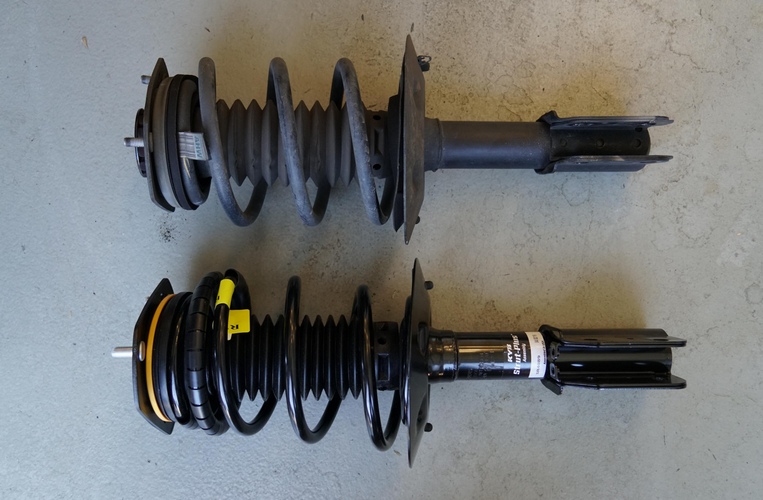
Anyway, I decided to perform a "full house" refresh while I was waiting for the “cooler” temps to roll in and picked up new Moog front & rear end links and new stabilizer bar bracket bushings.
The front bracket bushings were a bit of a pain, since the brackets are mounted to the top of the front subframe, with their front bolts under the tie rods and their back bolts very near the firewall. Still, they can be accessed without dropping the rear of the subframe. Turning the wheels gives clear access to the front bolts, but the back bolts were just plain difficult. Not impossible, just difficult.
The only other issue I encountered was that the top center strut flanges on the rear OEM struts are somewhat smaller than those on the KYB struts. The photo below shows the tops of the OEM rear struts. The area I’m referring to is the raised circular area around the center strut nut.
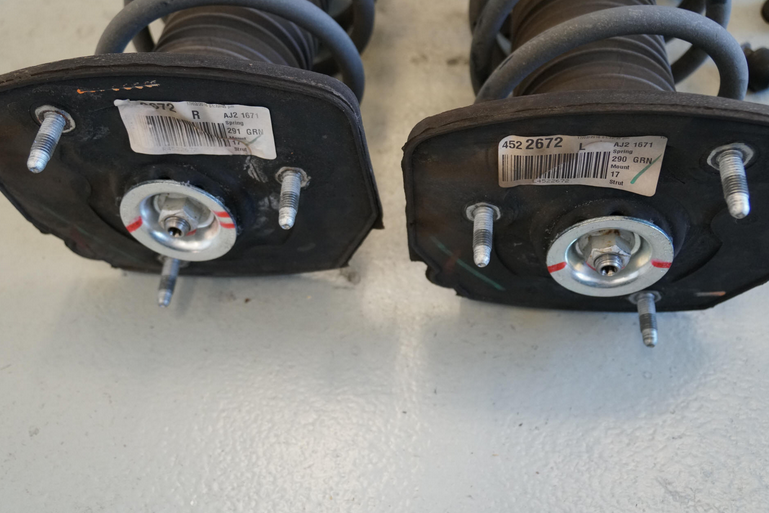
This area is larger on the KYB. Not enough to be a problem with respect
to installation. It fits fine, but its larger flange size prevented me
from snapping the rubber strut boots back into the holes in the top of
the strut tower. I imagine the boots are for noise suppression, and I
didn’t want to risk hearing more rear end noise if I omitted them. The
best solution I could come up with was to secure the boots to the strut
towers with some RTV, as shown below.
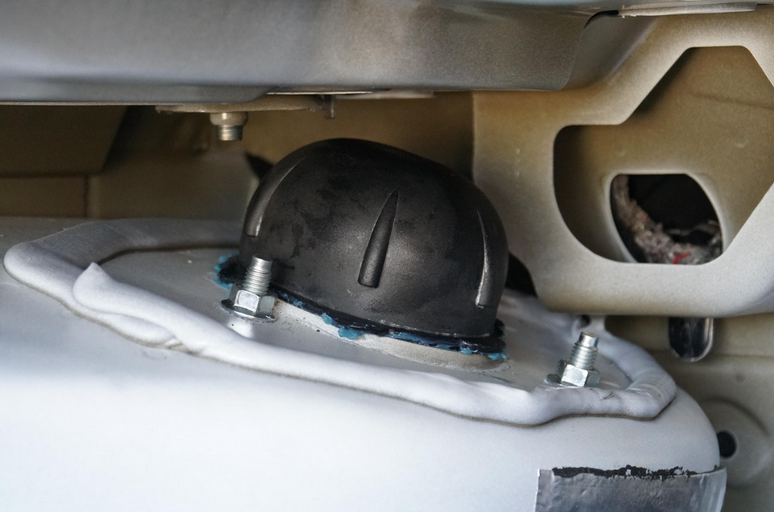
Here are a couple pics of the "dead soldiers" that were replaced. First the Front ones, and then the back ones …

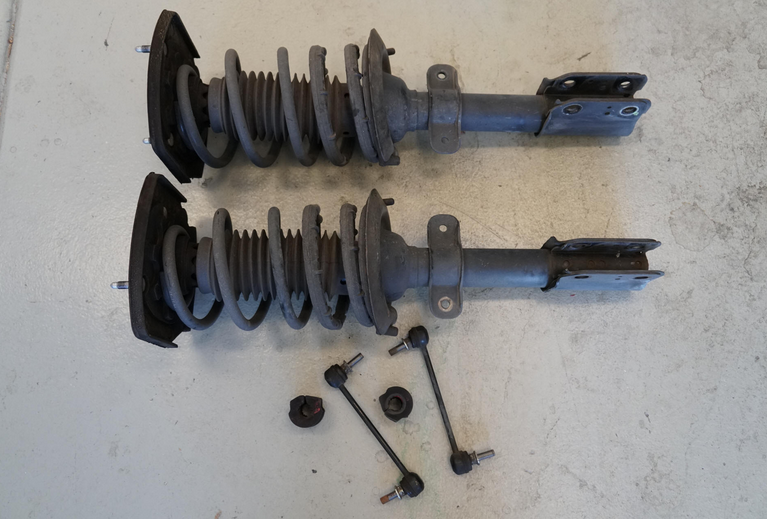
The old struts and springs were certainly beat, as were the end links. But the most obvious deterioration had occurred in the stabilizer bar bracket bushings. The OEM bushings had been wallowed out by about 2mm, and they had become very soft, almost like foam rubber.
After the installation was complete, I drove the car for a couple miles, and was amazed at how much quieter it rode, as well as how much more responsive to steering inputs.
When I removed the tires to start this work, I noticed that the inner shoulders of the car’s rear tires had suffered accelerated wear due to the increased negative camber introduced by the sagging rear springs. The inner shoulder tread was completely gone on one of them, so I decided to have my local Discount Tire store install new Michelin Pilot Sport All Season 4’s all the way around. Here’s a shot of the car wearing its new sneakers.
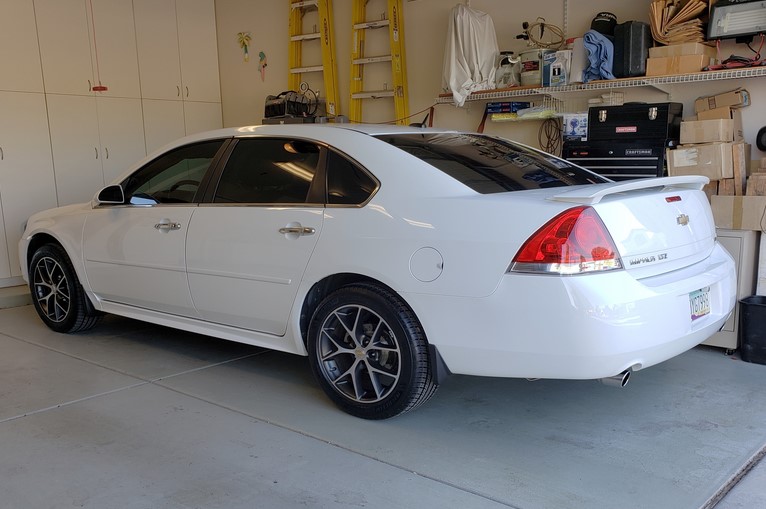
Even with just 10 miles driven since the installation, both the front and rear ride heights are only about 1/2” higher than they had been with the old parts (now just under 30” from the deck to the fender lip in front, and about 29.5” in back.) The ride height may decrease a little further as the car accumulates additional miles, but I can live with this, even if it doesn’t.